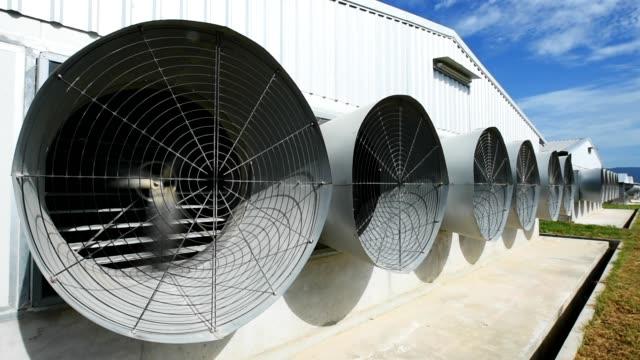How to Choose the Right Large Industrial Ceiling Fan for Your Space

When it comes to maintaining comfort, improving airflow, and optimizing energy efficiency in large facilities, choosing the right large industrial ceiling fan is critical. Whether you’re managing a warehouse, factory, gymnasium, or distribution center, the fan you select can significantly impact temperature control and operational efficiency. Here's how to make the right choice for your space:
1. Understand Your Space Dimensions
Start by measuring the space where the fan will be installed. Consider the ceiling height, square footage, and the layout of the room. Large industrial ceiling fans—especially High Volume Low Speed (HVLS) fans—are designed for spaces with ceilings at least 15 feet high. For optimal performance, match the fan diameter (typically ranging from 8 to 24 feet) to the size of the room.
2. Assess Airflow Needs
Determine the level of airflow your space requires. This depends on factors like:
-
Heat generation from machinery
-
Ventilation requirements
-
Humidity control
-
Number of occupants
Look at the fan’s CFM (Cubic Feet per Minute) rating. Higher CFM means better air movement. In large facilities, a fan with 100,000+ CFM is often necessary.
3. Consider Energy Efficiency
Energy-efficient fans save on utility costs and reduce your carbon footprint. Look for fans with brushless DC motors or gearless direct drive motors for superior energy performance and quiet operation. Many high-quality HVLS fans are Energy Star certified and can help you meet green building standards like LEED.
4. Evaluate Noise Levels
In environments like offices, gyms, or retail spaces, noise levels matter. Choose fans designed for quiet operation, particularly if they’ll be running continuously during working hours. Direct-drive models are generally quieter than those with gear drives.
5. Check for Safety and Durability
Industrial fans should meet rigorous safety standards. Look for features such as:
-
Fire-rated blades
-
Safety cables and redundant mounting systems
-
Blade stabilizers to prevent vibration
Also, ensure the fan can withstand conditions like moisture, dust, or corrosive air if used in challenging environments.
6. Control and Automation Features
Modern large industrial fans often come with smart controls that allow you to:
-
Adjust speed remotely
-
Set timers
-
Integrate with building management systems (BMS)
-
Monitor energy use and fan diagnostics
These features enhance convenience, safety, and energy savings.
7. Account for Seasonal Flexibility
The right industrial fan should serve you year-round. In summer, it creates a cooling breeze. In winter, it can be reversed to push warm air down from the ceiling, improving heating efficiency. Make sure your chosen fan includes a reversible motor or winter mode setting.
8. Budget vs. Long-Term Value
While upfront cost is a consideration, focus on long-term value. A slightly more expensive, high-efficiency fan can pay for itself over time through lower energy bills and fewer maintenance requirements. Factor in installation and warranty support as well.
9. Look for Reputable Manufacturers
Select fans from well-established manufacturers with strong warranties, solid customer support, and proven performance records. Leading brands often provide professional consultations to help you choose the best fan for your needs.
Conclusion
Choosing the right large industrial ceiling fan involves more than just picking the biggest or cheapest option. You must consider airflow performance, energy efficiency, safety features, and the unique characteristics of your space. With the right fan, you’ll improve comfort, reduce energy costs, and enhance productivity across your facility.
Ready to upgrade your space? Start by evaluating your building’s specific needs and consulting with a trusted industrial fan provider to make an informed decision.






